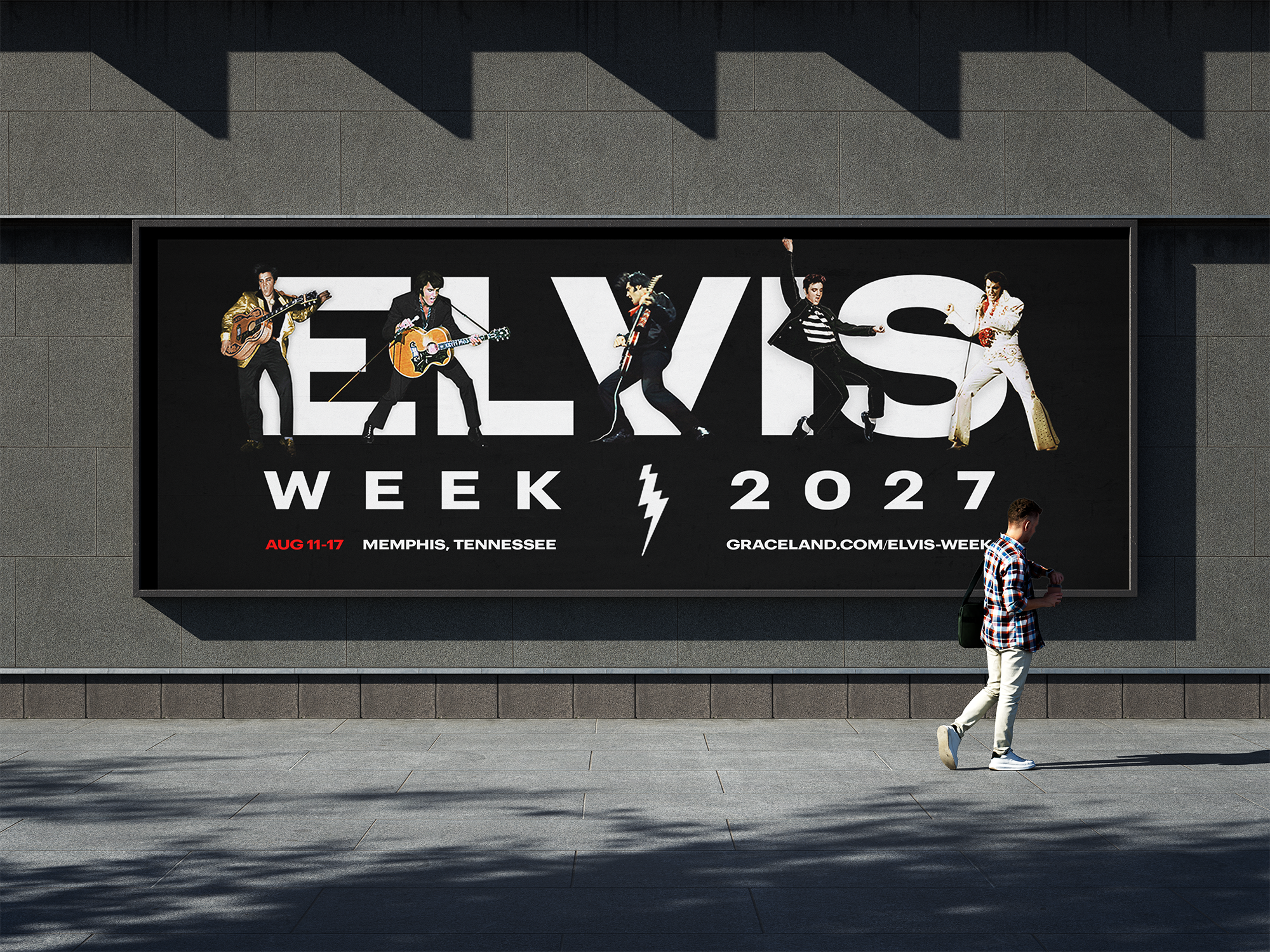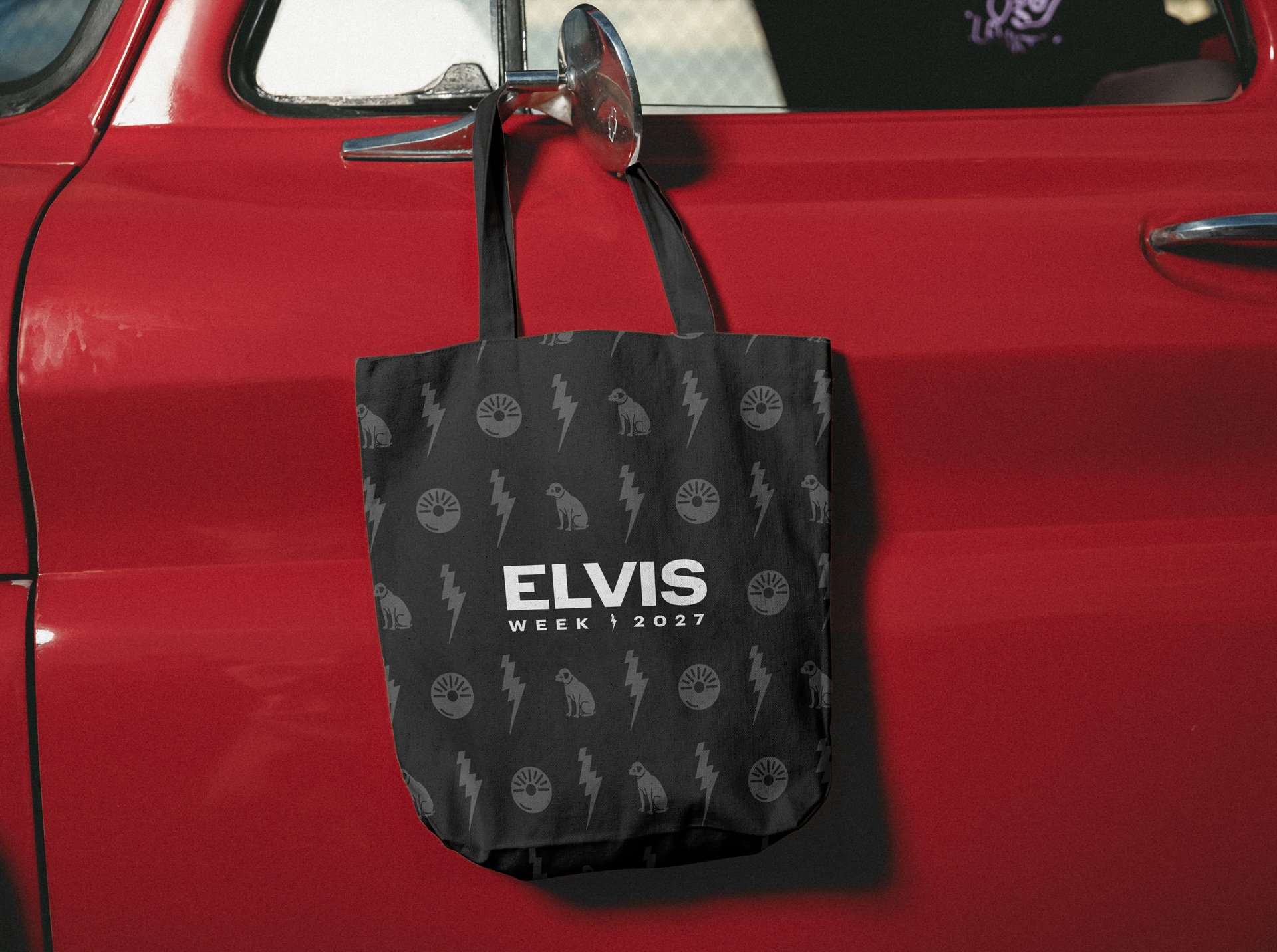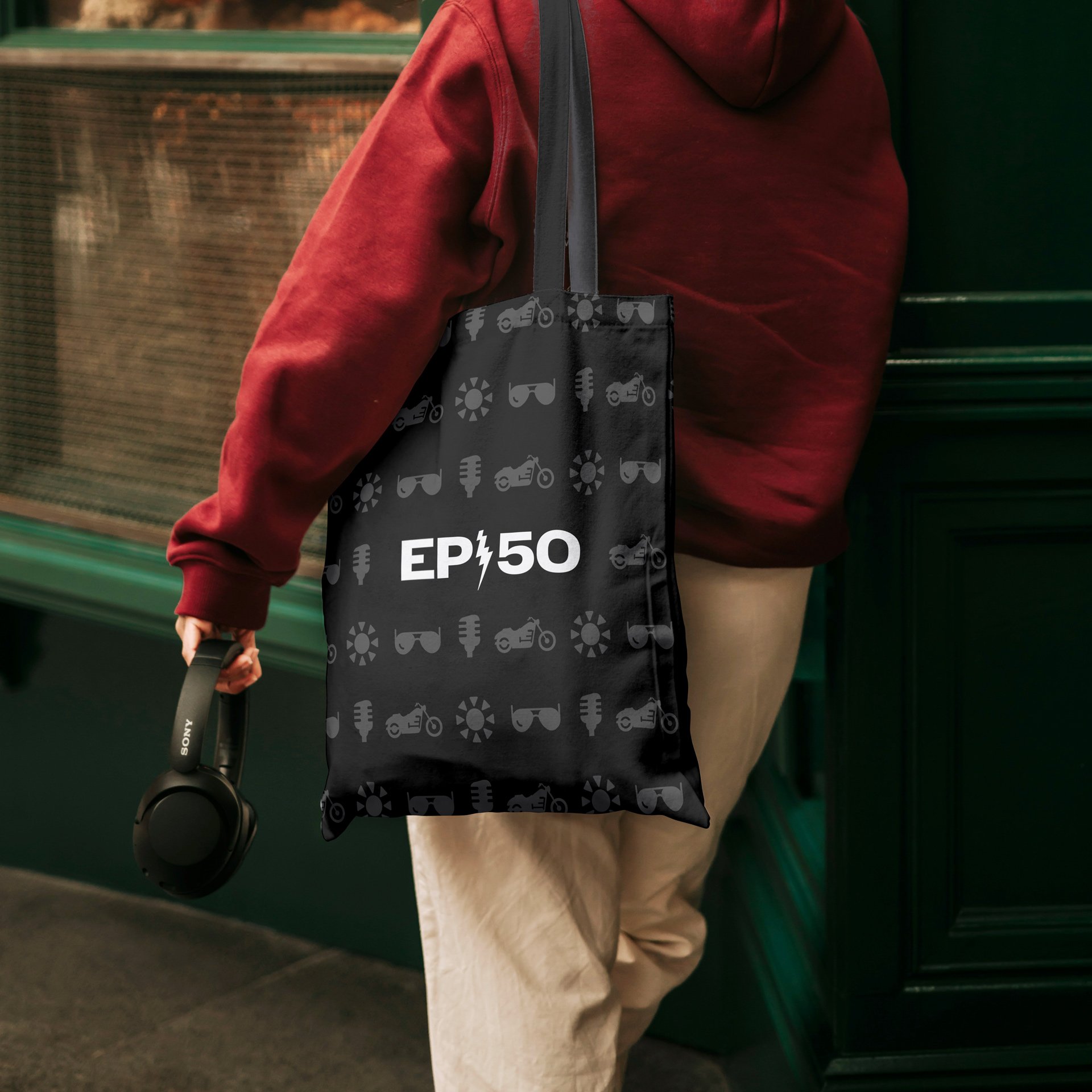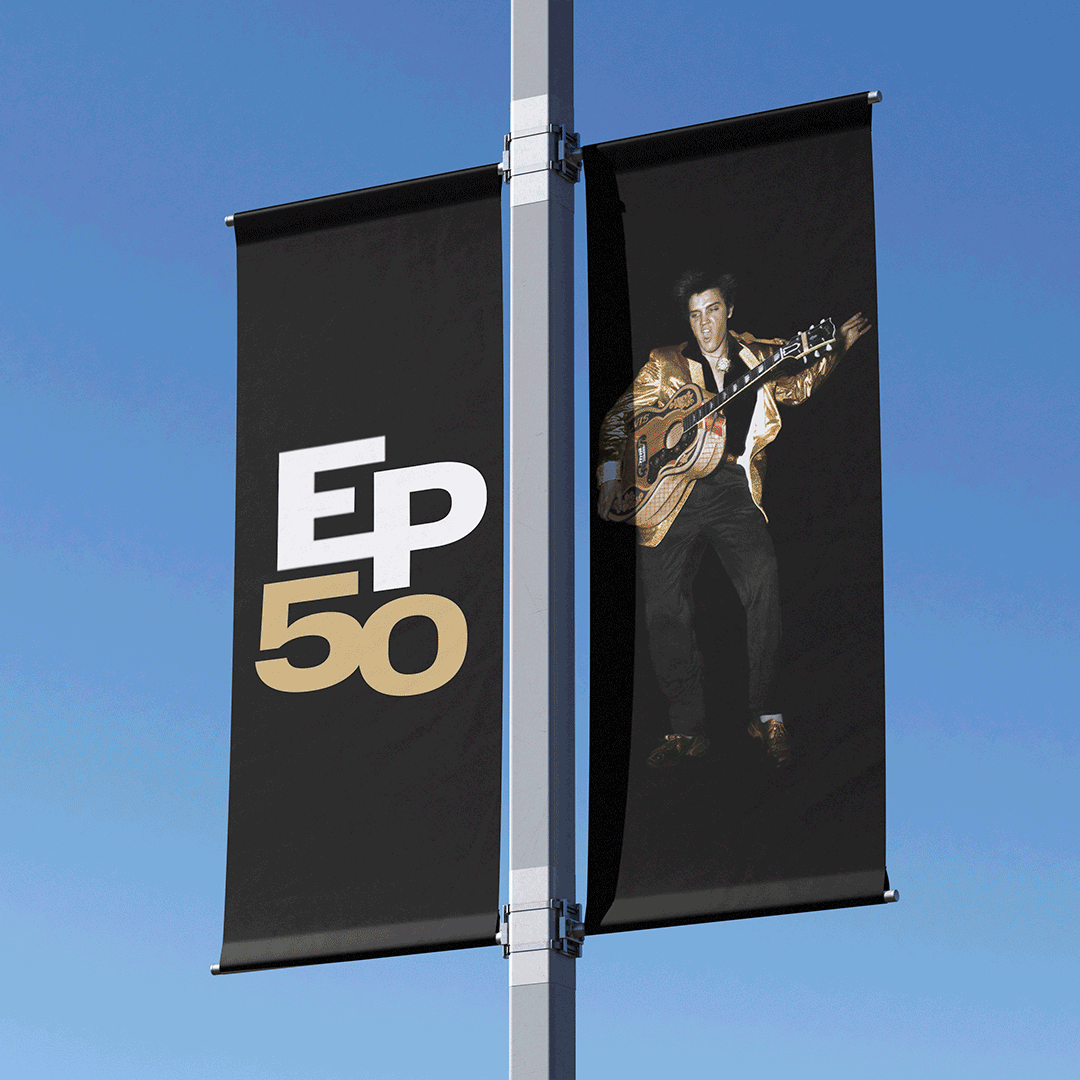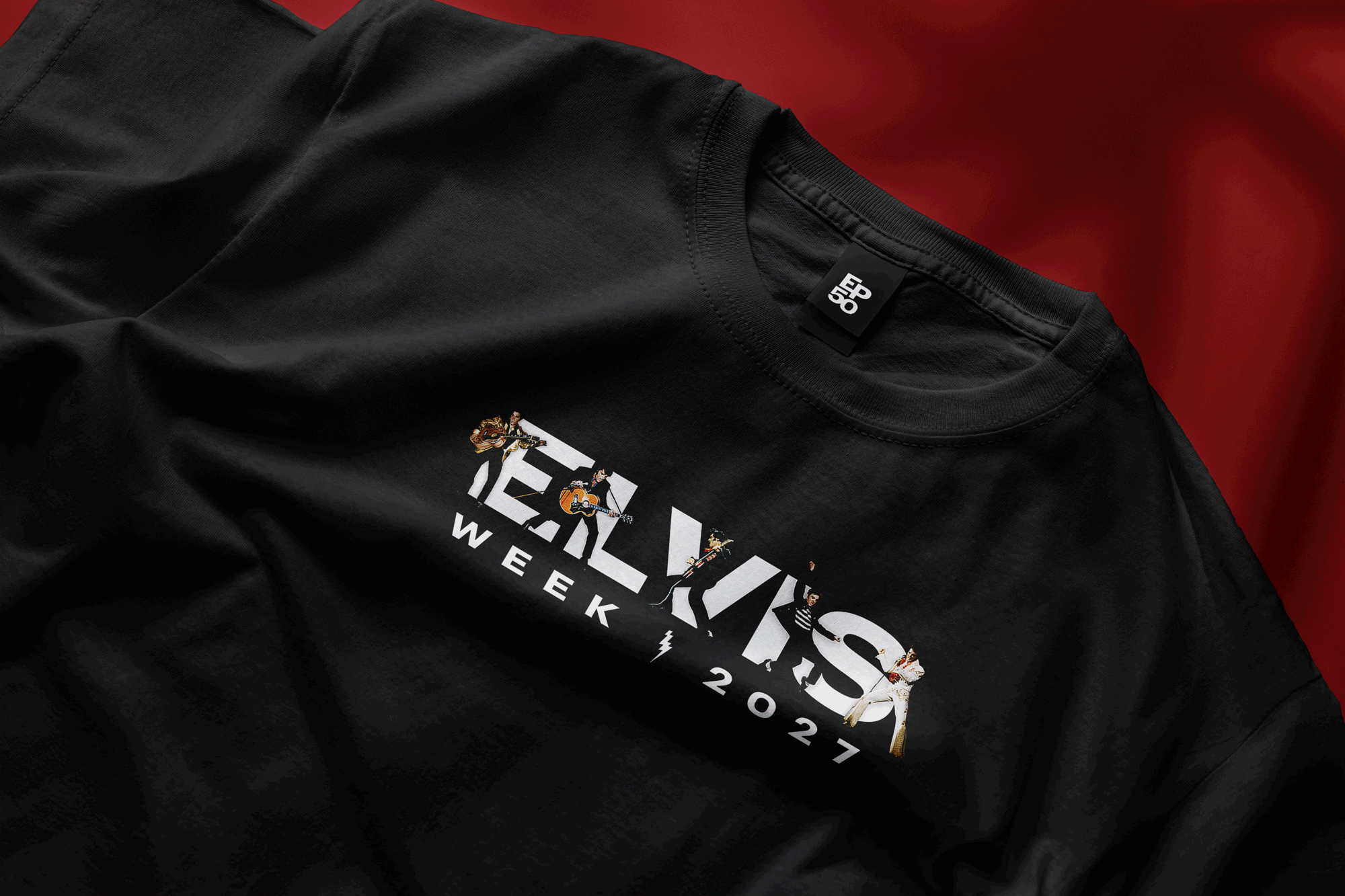Conceptual Campaign
Elvis Week 2027: 50th Anniversary
Creative Direction & Design: Kandace Selnick
Elvis Week 2027 marks the 50th anniversary of this iconic global celebration, honoring the legacy of Elvis Presley with a bold, reimagined creative direction for a new generation.
Elvis wasn’t just an artist — he was a cultural force. From his signature style to his electric stage presence, he redefined performance, self-expression, and authenticity.
The project centers on bridging eras — uniting lifelong fans with younger audiences through fresh visual storytelling, modern visual experiences and design.
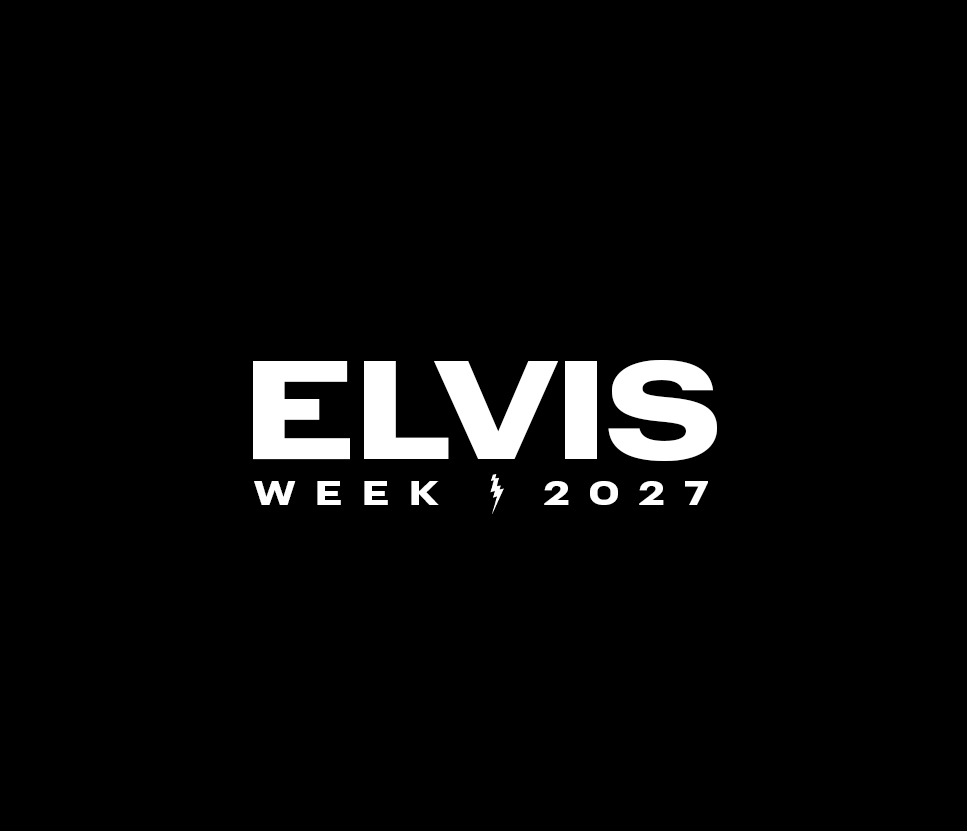

Rooted in the themes of rebellion, authenticity, and cultural impact, the 50th anniversary celebration introduces a bold new identity and visual experience that reflects Elvis’s enduring influence across music, fashion, and pop culture.
Key elements include:
A contemporary visual system blending minimal typography, symbolic iconography, and iconic photography
Bold, modern type inspired by classic Elvis posters and albums, adaptable across formats
Custom iconography inspired by Elvis’s music, fashion, and fan-favorite symbols capturing his bold expression and legacy.
A cross-generational design experience that honors the past while inspiring the future
This golden anniversary is not only a tribute to Elvis Presley’s unparalleled legacy — it’s a reinvention, built to connect, inspire, and celebrate the King of Rock ‘n’ Roll for the next 50 years.


For years, the visual identity of Elvis Week embraced a nostalgic aesthetic, featuring dated wordmarks, vintage-styled typography, and retro color combinations.
While beloved by longtime fans, the look leaned heavily on tradition, leaving limited room for contemporary reinterpretation or broader generational appeal.
The previous look relied on a surface-level representation of “retro rock 'n’ roll”. This aesthetic often stayed at the surface, capturing the imagery of the era more than the spirit behind it. The result felt more like a nostalgic tribute than a forward-looking cultural moment.
Key opportunities for improvement included:
Refreshing the visual language: Heavy reliance on retro tropes left little room for reinterpretation or design innovation
Broadening audience connection: The aesthetic primarily appealed to longtime fans, with limited resonance among younger or global audiences
The rebrand aimed to evolve the identity — not by abandoning the past, but by reimagining it. Rather than recreate the look of Elvis’s time, the creative direction sought to capture what he stood for: boldness, authenticity, and creative rebellion. The new visual system introduces a refined, contemporary take that celebrates Elvis as an enduring cultural icon.
The result is a revitalized Elvis Week: timeless, relevant, and ready to inspire new generations.
